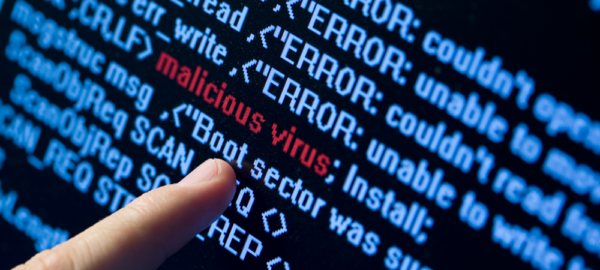
Understanding Fileless Attacks
Malware. The word alone makes us all cringe as we instantly relate it to something malicious happening on our computers or devices. Gone are the days when we thought the easiest way to protect our computers was to install the latest anti-everything. But today’s hackers no longer depend on victims downloading an infected file – they are now leveraging fileless malware.
According to Ponemon’s 2017 State of Endpoint Security Risk Report, fileless attacks are almost 10x more likely to succeed than file-based attacks.
Here’s an example of how financial institutions became susceptible. In 2017, ATMs around the world were found empty, with no trace of how all the money disappeared. By using fileless malware, hackers had actually gained remote control of the computers managing the ATM machines. They knew exactly how much money each machine held and through code embedded into bank computers, the ATMs were commanded to dispense money. Once the robbery was complete, the malware deleted itself without a trace. So, how did they do it?
Hackers Increasingly Leverage PowerShell and WMI to Attack
The latest in fileless malware leaves zero footprint as it runs on legitimate programs your computers trusts, most commonly PowerShell and Windows Management Instrumentation. What makes this attack different than viruses and trojans is that it loads directly into the memory of your CPU. This means that typical anti-malware and anti-virus software cannot detect it.
PowerShell
PowerShell is a tool in which users can automate tasks or manage configurations. Its capabilities allow you to simplify and automate tedious and repetitive tasks by creating scripts and combining multiple commands. PowerShell comes embedded in Windows’ programing but can be uninstalled. This tool is most often used by IT administrators, as it simplifies the management operations in large corporate networks.
Windows Management Instrumentation
Windows Management Instrumentation (WMI) permits administrators to gather metrics, install software, conduct updates and other tasks on the Windows operating system. Hackers can use this tool to silently run malicious code across multiple computers. Although WMI cannot be uninstalled, it can be manually disabled.
How Does an Attack Occur?
Fileless malware embeds itself into your natural web processes. It starts with clicking on a banner or a link that directs you to a webpage that requires Adobe Flash. Unfortunately, the Flash that loads is riddled with vulnerabilities that power up PowerShell or WMI and begin working behind the scenes to infiltrate your system.
What Damage is Done?
More than 50 percent of successful breaches are attributed to fileless malware attacks. If the malware gains access to PowerShell or WMI, it can move laterally across devices connected to your organization’s network. The malware is capable of exploiting applications such as Microsoft Office files and web browsers, collecting information and hindering device performance in the process.
Malware attacks also cause financial damage. In the Ponemon study referenced earlier, respondents claimed that hackers pilfered corporate information through fileless malware and later requested a ransom in return for the data. The average ransom payment was $3,675.
Since this cyberattack is difficult to detect, you might be wondering how do I protect myself?
3 Tips to Protect Against Fileless Malware
- Avoid clicking on suspicious links or attachments. Visiting an unknown website or opening an unfamiliar file can be a gateway for fileless malware.
- Disable PowerShell and WMI. If you’re not using them, deactivating these tools lessens the opportunity for hackers to access your information with a fileless attack.
- Keep your software up to date. As inconvenient as they can be, software updates are usually done to patch critical security vulnerabilities.